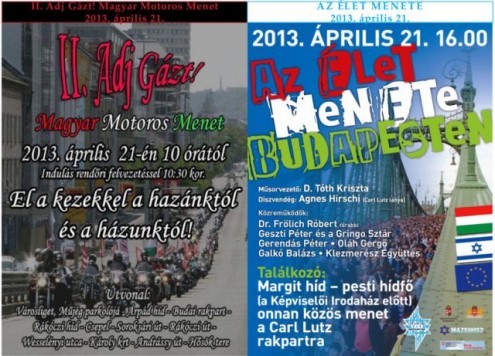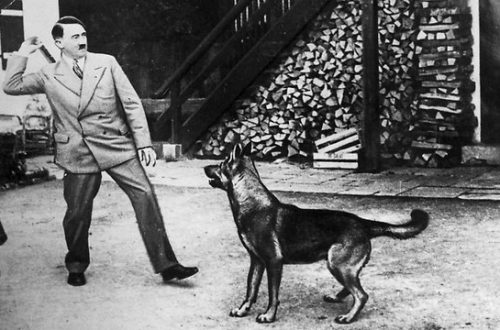Guest post by Karl Pfeifer
On the national holiday March 15, the Hungarian government awarded the annual Tancsics prize – the country’s highest journalistic award – to Ferenc Szaniszlo, a presenter for the pro-government Echo TV channel. Szaniszlo is notorious for spreading Jewish conspiracy theories and describing the country’s Roma minority as “human monkeys”.
Zoltan Balog, the government minister responsible for state awards, described the choice of Szaniszlo as “regrettable”. He claimed he had been unaware that the presenter had made antisemitic and racist remarks on air. Mr Balog said he had no legal powers to rescind the award. Balog wrote a letter to Szaniszlo asking him to refuse the award. Szaniszlo did so, declaring that the USA and Israel were afraid of him.
Other recipients of state prizes included the musician, Janos Petras, lead singer of the group Karpatia, which is the house band of Hungary’s extreme rightwing and virulently antisemitic Jobbik party. Balog awarded also the archaeologist Kornel Bakay, who has claimed Jesus Christ was Hungarian and that the Jews were slave traders during the Middle Ages. Bakay organised an exhibition honouring Ferenc Szálasi, the leader of Hungarian Nazis during World War II, who was hanged as war criminal in 1946.
The office of prime minister Viktor Orbán answered a parliamentary query from Ildikó Lendvai, a socialist MP, that the award given to Petras, who composed the marching song of the infamous “Hungarian Guard” and made homophobic remarks was given “in regard to the national public point of view.”
Lendvai said such gestures to the extreme right encourage those who advertise a motorcycle rally on the same day as the April 21 March of the Living (commemorating the Hungarian Holocaust) with the slogan “Adj gázt!” (literally “Give gas!”).

According to Professor Randolph Braham’s authoritative two-volume The Politics of Genocide: The Holocaust in Hungary, the Jewish population of Hungary at the start of World War II totalled over 825,000 souls. Many of these Jews lived in territories that Hungary had recently occupied or reacquired from neighbouring countries as Hungary’s regent and head of state, Admiral Miklós Horthy, participated as an ally of Adolf Hitler in the destabilization of Europe and the dismemberment of Czechoslovakia, Romania and Yugoslavia. Hungary withdrew from the League of Nations and joined Nazi Germany in its military invasion of the Soviet Union in June 1941. Unlike Italy, which withdrew from its German alliance in 1943, and unlike Romania, which did the same in 1944, Hungary remained allied with Nazi Germany until the country was overrun by Soviet military forces advancing on Germany from the east.
Of the country’s 825,000 Jews, nearly 75 percent were murdered. Antisemitism in Hungary did not arrive from abroad. Miklós Horthy’s Hungary was the first European country after World War I to put in place numerus clausus legislation, which restricted Jewish participation in higher education (1920). Racial laws similar to those of Nazi Germany, which defined Jews based on religion and “race,” and deprived them of the right to practice their professions, to own land, and to marry non-Jews, were passed in 1938 and 1939. With war came the systematic theft of Jewish property and mass murder. In 1941, 20,000 “foreign Jews,” who were residents of Hungary but not Hungarian citizens, were deported across the border by Admiral Horthy’s government to Kamenetz-Podolsky in Ukraine, where they were executed by waiting German forces. Hungarian troops executed another 1,000-plus Jews during their invasion of northeast Yugoslavia that same year. Over 40,000 of the Jewish men conscripted into Jewish forced labour battalions and taken to the eastern front, armed only with shovels to dig defences for the Hungarian military, died of exposure, were killed in battle areas, or executed by the Hungarians as they retreated following their defeat at the battle of Stalingrad in early 1943. Then, between April and July 1944, over 400,000 Hungarian Jews were driven from their homes, concentrated in ghettos, and deported to Auschwitz, where the overwhelming majority of them were gassed on arrival. It was the Hungarian gendarmerie and police who identified and concentrated the Jews, loaded them onto trains, and delivered them into the hands of German SS units waiting at the Hungarian border.
The slogan “Give gas!” refers to sending Hungarian citizens to the gas chambers.
Leftwing newspapers and politicians called the rally a provocation aimed at Hungary’s Jewish community. After refusing to comment for several days, Prime Minister Orban’s Fidesz party finally denounced the motorcycle rally and its slogan.


